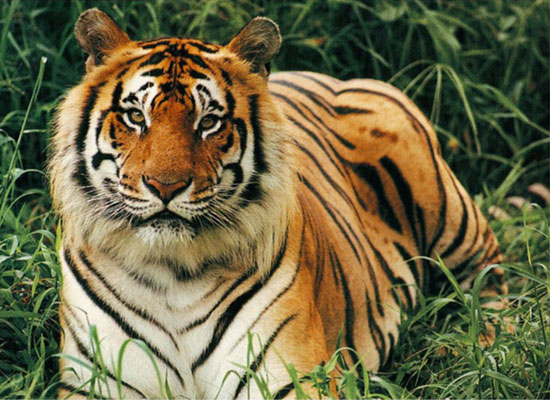



|
The Bengal Tiger is one of the largest species of tigers in the world. They are also the one that offers the highest number of them in the wild. Don’t get to excited though as they are still at a high risk of being endangered. There are only about 1,400 of them in the wild.
What is also interesting is that there is about 1% which are DNA verified hybrids. They have one parent that is a Bengal Tiger and one that is a Siberian Tiger. These hybrid tigers seem to do quite well in the wild with most of the males being sterile. It is believed that this genetic link though was the result of mistakes in breeding while in captivity and then released to the wild instead of a natural occurrence that takes place in the wild.
The biggest threat to the in India is that their natural habitat continues to be cut away by logging companies. As a result they struggle to survive in less area and with less prey to feed upon. Finding enough water is a common problem for them as well. You may find many similarities between the Bengal Tiger and the Siberian Tiger. This is because the former is a sub species of the latter.
This particular species of tiger can weigh up to 500 pounds for a full grown male and about 400 pounds for a full grown female. They also feature very long tails and heads that are larger than that of other species. They are excellent hunters and feed on a variety of prey found around India. They include deer, antelope, hogs and buffalo. They have also been seen consuming monkeys, birds, and other small prey when their main food selections become scarce.
In some areas there has been a problem with the Bengal Tiger eating livestock as well. Humans continue to try to live in these areas that used to be home to the tigers. Then they wonder why the animals they are raising become meals for them. Many of these ranchers engage in the illegal killing of tigers too so that they can protect their investment in such livestock.
There have also been reports of the Bengal Tiger killing and eating humans. However, it is believed this is only to satisfy their need to feed when they haven’t been able to find other prey for days. They tend to consume up to 60 pounds of food at one time. Then they will go for several days without feeding on anything.
It is estimated that less than 2,000 of the Bengal tigers remain at this time. This is less than half of what the population was just 10 years ago. As a result there is a very aggressive protection plan in place for them. The efforts are working to an extent but poaching of these tigers is still a huge concern.
The Wildlife Protection Society of India continues to strive to look into all allegations of tiger poaching. They have confiscated large amounts of tiger parts and pelts but it is often hard for them to get to the source of who is actually responsible for killing and for shipping them. Even though they detain those caught with them there are more people involved in the process than they are able to uncover.
To get away with poaching though many of these hunters have resorted to poisoning the tigers. Then they are found already dead and they can’t be held responsible for killing them. This is also the same practices that many of the ranchers engage in as well.
|